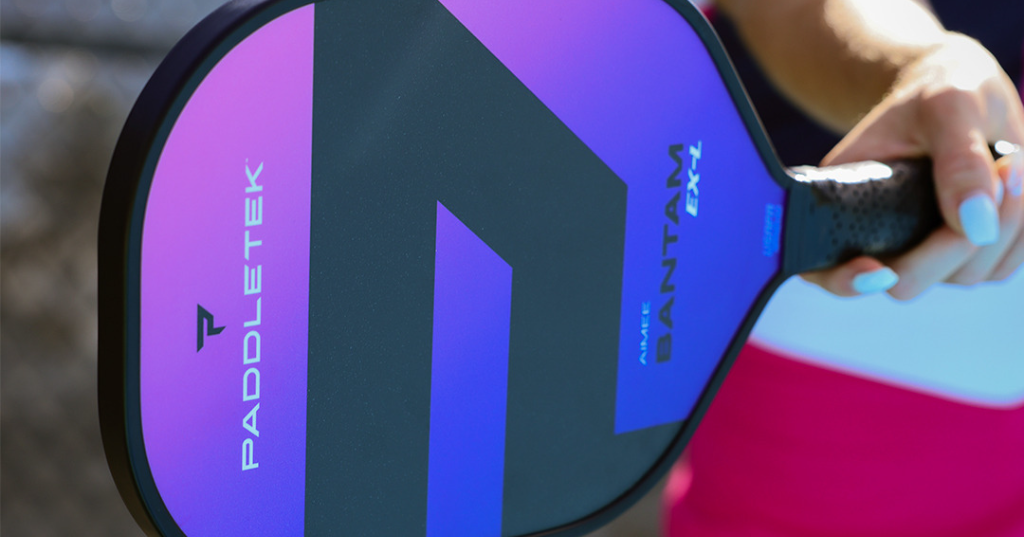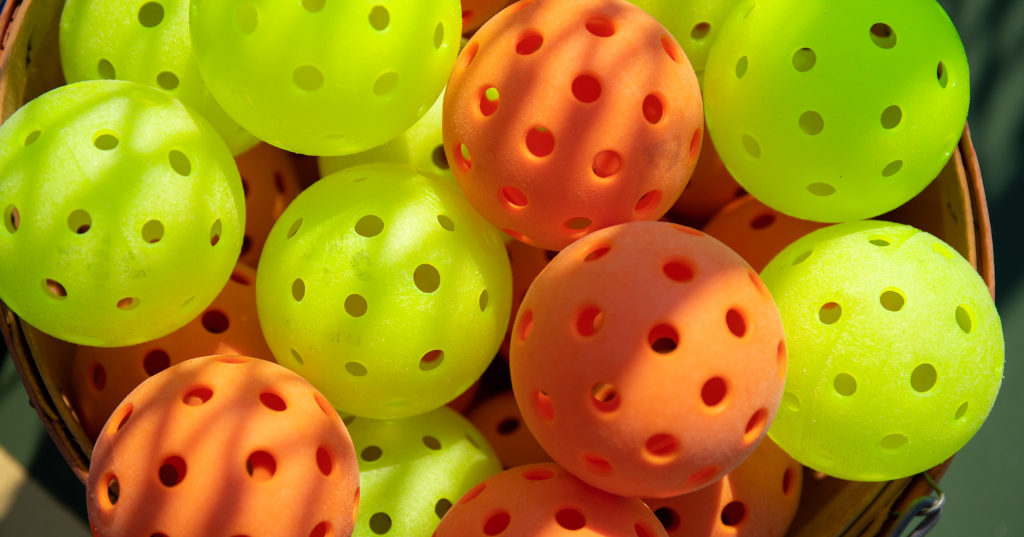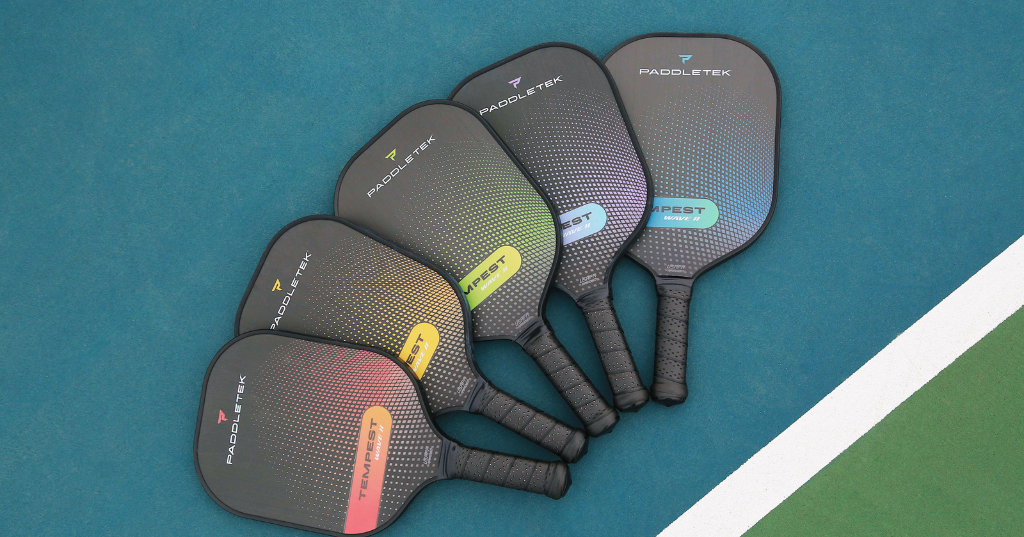With the growth of pickleball, the competitive playing pool is getting bigger and bigger every day - meaning your serve needs to work for you instead of against you. It's one of the most important parts to perfect in pickleball, so what should your serve look like?
A highly effective serve in pickleball is one that consistently lands deep in the service area and can be served at varying speeds or with unique effects like spin. In addition to technique, gripping the paddle, court positioning, and ball placement are critical components of serving.
There's more to serving than using a paddle to guide the ball over the net. This guide will walk you through the important nuances that go into creating your best serve: the best techniques for gripping the paddle, serving stance, and where to place your serve.
1. The Best Pickleball Grips For Serving
When it comes to pickleball, there are three main pickleball grips you should know about: the eastern, western, and continental grip. But which grip is best to use when serving? They all have advantages and disadvantages; it comes down to what suits your playing style and how they help you identify your opponent’s weaknesses.
Eastern Pickleball Grip
Both beginners and intermediate players widely use the eastern pickleball grip because it’s fairly neutral. This grip allows you to hit your forehands and backhands comfortably. Due to its versatility, it’s the most popular paddle grip you’ll see players using.
Because the Eastern grip is the easiest to use when you need to transition between your forehand and backhand, it lends itself well to the underhand serve.
To form the eastern grip, hold your paddle with your non-dominant hand. Next, place your dominant hand flat on the paddle face and slide it down to shake hands with the grip.
This grip is commonly called the handshake grip and the paddle should be pretty much vertical in your hand.
If right-handed, the V shape formed between your thumb and index will sit on the right edge of the handle’s top bevel, the inverse being true if left-handed.
Western Pickleball Grip
The western pickleball grip is excellent for generating more topspin on your shots. However, it can get you into trouble when you need to hit a backhand. The western grip creates problems on your backhand due to your palm being behind the paddle. So although it improves the power and spin of your forehands, it weakens your backhands.
For serving, the western grip will offer you power and spin. Just be sure you’re confident switching grips or using a two-handed backhand if the return heads to your backhand side.
For righties, to use the western grip, begin in the eastern grip and rotate the V shape of your grip between 1 and 2 bevels clockwise in your hand. For the lefties out there, rotate 1 to 2 bevels counterclockwise.
Continental Pickleball Grip
Held like you would a hammer, the continental pickleball grip is sometimes also called the hammer grip. If your dinks and backhands need improvement, give this grip a try.
The continental grip is best for dinks and backhands and you can harness quite a bit of power on your backhand serves with this grip, but what makes it great is also what makes it weak, and that's forehands.
That's not to say you couldn't use a continental grip forehand, but it would be better to rotate the grip ever so slightly and get into an eastern grip. If you hit it forehand, it will feel more unnatural and lend an awkward angle to the paddle face.
To find the continental grip, hold your paddle like you would hold a hammer and make sure the handle sits on top of your palm, with your thumb and index finger wrapping around the grip, forming the V on the top bevel.
If holding with your right hand, the point of the V will be on the left edge of the top bevel and the right edge of the top bevel if you're holding with your left hand.
The continental grip could be an upgrade for backhand serves, and certainly add some extra power, an asset for a powerful drop serve since your dropping hand wouldn't be in the way of your paddle, but not so much for forehands. You're better off using a different grip.
Because of how close the continental grip is to the eastern grip, they're a great combination to learn - such as using the eastern for your serves and forehands, and a quick flip to continental for backhands and dinks.
How to Find the Best Pickleball Grip For You
For new players, embracing the eastern grip is ideal. It works well just about anywhere, and certainly for volley serves. For intermediate players, assuming you use the eastern grip, it's a good idea to add continental to the mix, improving your dinks/volleys/backhands in the process.
And for those of you with matches under your belt, learn all three - each has a specific role in a match and if you can quickly flip from one to the other, that's a valuable asset. If you'd rather learn a grip based on a skill outage, here's a simple way to think of each:
- Looking for Versatility? Try the eastern grip, which allows you to hit both your forehand and backhand, making it a solid weapon for serving
- Looking for Spin? Give the western grip a go - your serves can gain more topspin, just know that at a certain point of skilled competition, spin is less valuable for serving
- Looking to Showcase Your Backhand? If you favor your backhand for serving, start with the continental grip - this one will add some oomph to your serves to boot.
2. Serving Position and Stance in Pickleball
Serving includes quite a few elements, especially in pickleball. From calling the score, the serving sequence in doubles, and the technical aspects of serving, there are many layers to it.
Before we get into the specifics of how and where to stand, it’s important to lay down some basic pickleball serving rules first, because getting these wrong will result in a fault.
The Rules of Serving in Pickleball
Whether this is your first time seeing the official USA Pickleball serving rules (section 4.A.), or this is a refresher, it's important to know the rules of serving.
There are quite a few to learn and you should definitely read about them from USA Pickleball, but to simplify, we've summarized several serving rules that beginners commonly break, including:
- Target: Must serve diagonally to the opposite service court - the kitchen and the kitchen line are not in the service court. (4.A.1.)
- Feet: When the ball contacts the server's paddle, their feet have to be behind the baseline, confined between the centerline and sideline intersections, and at least one foot has to be on the ground. (4.A.4.)
- Volley Serve: The serve must be underhand, make contact below the waist, moving in an upward motion, and the paddle head has to be below the wrist at contact. (4.A.5.)
- Drop Serve: The serve must be dropped from any naturally reached height (by hand or paddle), fall without any assistance, and bounce at least once before hitting. (4.A.6.)
Again, there's far more to the rules of serving in pickleball than four bullet points, so be sure to investigate them thoroughly. But if you can commit the concepts above to memory and action, you'll avoid many of the avoidable mistakes that beginners make when serving.
With the rules of serving out of the way, let's dive into your stance and positioning while serving.
What Stance Should You Be In When Serving in Pickleball?
A closed stance is ideal for serving in pickleball, as it favors the motion and power of a person's dominant hand, typically the hand that's holding the paddle. A closed stance places the non-dominant leg forward, forcing the server to be turned away from the net, generating power as they rotate.
An alternative stance for serving is the semi-closed (semi-open) stance, which helps prevent the serving player from over-rotating their body, but comes at the price of less power because of a decreased range in rotation.
Where the closed stance has the server's feet parallel to the baseline, a semi-closed stance is a hybrid of closed and open stance, meaning the non-dominant foot is nearly perpendicular to the baseline while the dominant foot is back and nearly parallel to the baseline.
Where Do You Stand When Serving in Pickleball?
In pickleball, the server must stand just behind the baseline, between the sideline and centerline. Generally, players will stand close to the baseline to make the net closer, while positioning somewhere in the middle 80% of the baseline, varying location for comfort and serve type.
There are exceptions of course, but being centrally located for your serve makes it easier to get to the ball when it comes back over the net. If you're hugging a specific side while serving, you're creating an opportunity space for your opponent.
Now, the receiver may stand wherever they want (4.B.7.) but they have to be the person to receive it, and the server is required to place it in their service area, so it's wise to be at least a foot or two behind the baseline of the service area to handle stronger serves.
Remember, the receiving player has to let the ball bounce before returning it, so being too far up the court is a quick way to jam your body up.
Court Positioning When Serving in Doubles
In doubles pickleball, the basic positioning principles are the same as singles. The only person that has a limitation on where they have to stand during a serve is the serving player, who is confined behind the baseline and between the centerline and sideline.
This means the server's partner can stand anywhere, but in general, it's best to be around the baseline as well, mainly because of the double-bounce rule (two-bounce). This requires the serving team to let the ball bounce once before volleying.
Similar to why the receiving team wants to leave space to return the serve, the serving partner should reciprocate, as this gives space to perfect the third shot.
Keep in mind that non-serving players can stand wherever they want so you may see teams doing different things if they are stacking, or what switching is called in pickleball. As you and your partner build court chemistry, you can explore stacking or other doubles strategies which impact positioning.
But in general, being on the baseline is a solid spot for the serving partner.
The receiving team will also generally position the non-receiving player at the non-volley line. It’s okay for this non-receiving player to stand closer to the middle line to cut off the server’s angle, but be sure not to hug the line too much because if they hit you, it’s their point.
3. Placing the Most Effective Pickleball Serve
The only way you can score points when playing pickleball is while you’re serving - so holding onto the serve, and making sure you get every one of them over the net to win a point are vital.
Your serve sets the game in motion, triggering the double bounce rule.
In addition, targeting certain parts of the service court could mean the difference between keeping your serve or turning it over to your opponent.
Serving Tactics To Implement:
- Serve Deep: Deep serves will keep your opponent back near the baseline and make returning your serve difficult.
- Mix In Some Shorties: Just like switching from a player’s backhand to their forehand can cause a missed return, mixing in the occasional short serve with your deep ones will have them lunging forward with a short return.
- Aim For Weak Side: You can bet that most players’ weaker side is their backhand, especially if they’re favoring a grip that doesn’t lend itself to a strong backhand. Targeting their weaker side will force a weaker, shorter return of serve or cause them to run around their weaker side. This opens up the court for your next shot.
- Reduce Predictability: If you’re always aiming your serve at their weaker side, they’ll start to lean that way and anticipate it. Mix up your serve now and then to keep them guessing.
- Avoid Lines: Don’t aim too close to the lines, because this could lead to you overhitting and hitting the ball out of bounds. Go for bigger targets, like two or three feet within the lines.
Fundamentals Win Games
If you’ve been struggling with your pickleball serve, hopefully, these tips will help to improve your game. Remember to start small and focus on one or two of these foundational principles at a time.



Leave a comment
This site is protected by hCaptcha and the hCaptcha Privacy Policy and Terms of Service apply.